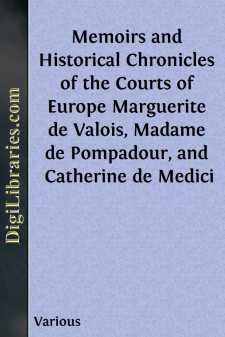Categories
- Antiques & Collectibles 13
- Architecture 36
- Art 48
- Bibles 22
- Biography & Autobiography 813
- Body, Mind & Spirit 142
- Business & Economics 28
- Children's Books 17
- Children's Fiction 14
- Computers 4
- Cooking 94
- Crafts & Hobbies 4
- Drama 346
- Education 46
- Family & Relationships 57
- Fiction 11829
- Games 19
- Gardening 17
- Health & Fitness 34
- History 1377
- House & Home 1
- Humor 147
- Juvenile Fiction 1873
- Juvenile Nonfiction 202
- Language Arts & Disciplines 88
- Law 16
- Literary Collections 686
- Literary Criticism 179
- Mathematics 13
- Medical 41
- Music 40
- Nature 179
- Non-Classifiable 1768
- Performing Arts 7
- Periodicals 1453
- Philosophy 64
- Photography 2
- Poetry 896
- Political Science 203
- Psychology 42
- Reference 154
- Religion 513
- Science 126
- Self-Help 84
- Social Science 81
- Sports & Recreation 34
- Study Aids 3
- Technology & Engineering 59
- Transportation 23
- Travel 463
- True Crime 29
Memoirs and Historical Chronicles of the Courts of Europe Marguerite de Valois, Madame de Pompadour, and Catherine de Medici
by: Various
Description:
Excerpt
INTRODUCTION
The Secret Memoirs of Henry of Navarre's famous queen possess a value which the passage of time seems but to heighten. Emanating as they undoubtedly do from one of the chief actors in a momentous crisis in French history, and in the religious history of Europe as well, their importance as first-hand documents can hardly be overestimated. While the interest which attaches to their intimate discussions of people and manners of the day will appeal to the reader at the outset.
Marguerite de Valois was the French contemporary of Queen Elizabeth of England, and their careers furnish several curious points of parallel. Marguerite was the daughter of the famous Catherine de Médicis, and was given in marriage by her scheming mother to Henry of Navarre, whose ascendant Bourbon star threatened to eclipse (as afterwards it did) the waning house of Valois. Catherine had four sons, three of whom successively mounted the throne of France, but all were childless. Although the king of the petty state of Navarre was a Protestant, and Catherine was the most fanatical of Catholics, she made this marriage a pretext for welding the two houses; but actually it seems to have been a snare to lure him to Paris, for it was at this precise time that the bloody Massacre of St. Bartholomew's day was ordered. Henry himself escaped--it is said, through the protection of Marguerite, his bride,--but his adherents in the Protestant party were slain by the thousands. A wedded life begun under such sanguinary auspices was not destined to end happily. Indeed, their marriage resembled nothing so much as an armed truce, peaceable, and allowing both to pursue their several paths, and finally dissolved by mutual consent, in 1598, when Queen Marguerite was forty-five. The closing years of her life were spent in strict seclusion, at the Castle of Usson, in Auvergne, and it was at this time that she probably wrote her Memoirs.
In the original, the Memoirs are written in a clear vigorous French, and in epistolary form. Their first editor divided them into three sections, or books. As a whole they cover the secret history of the Court of France from the years 1565 to 1582--seventeen years of extraordinary interest, comprising, as they do, the Massacre of St. Bartholomew, already referred to, the formation of the famous League, the Peace of Sens, and the bitter religious persecutions which were at last ended by the Edict of Nantes issued after Henry of Navarre became Henry IV. of France. Besides the political bearing of the letters, they give a picturesque account of Court life at the end of the 16th century, the fashions and manners of the time, piquant descriptions, and amusing gossip, such as only a witty woman--as Marguerite certainly was--could inject into such subjects. The letters, indeed, abound in sprightly anecdote and small-talk, which yet have their value in lightening up the whole situation.
The period covered coincides very nearly with the first half of Marguerite's own life. Incidents of her girlhood are given, leading to more important matters, personal and political, up to the twenty-ninth year of her age....












